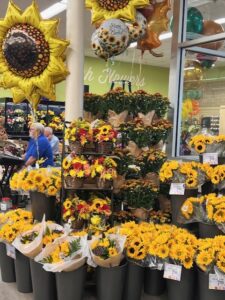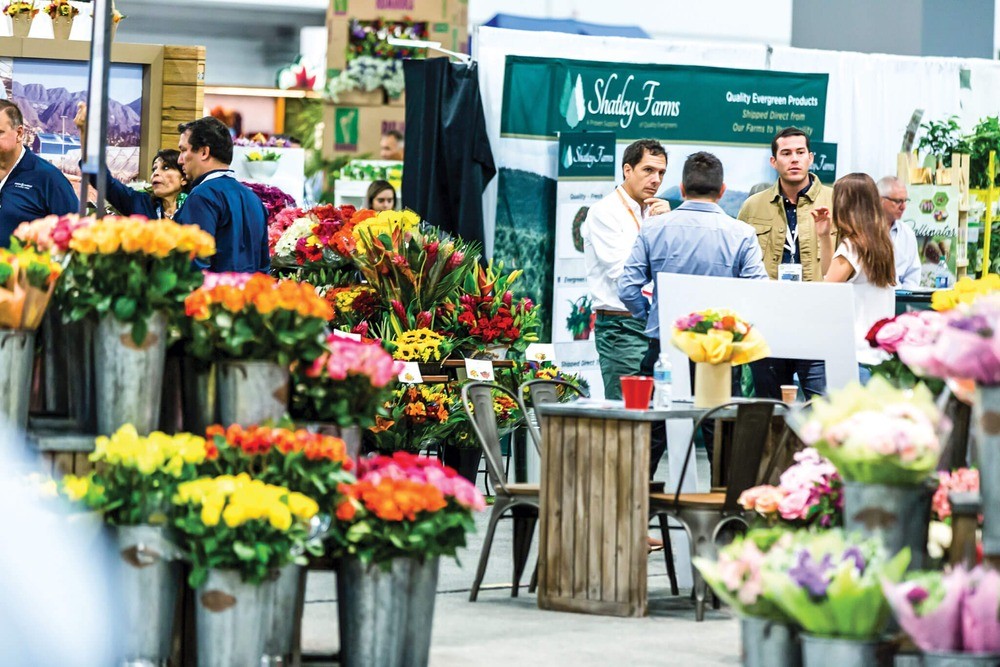Do you ever wonder what things are happening on store-level that you have no idea about? Here’s a quote that a store manager told one of the Curate customer success team members:
“We just buy from our local wholesaler all the time instead of through our corporate program. We know we’re paying more but we were unable to have dependable shipping times otherwise.”
There’s a low chance they’d be this frank with Corporate. Why? Because that’s a significant amount of profit being handed to another step in the supply chain instead of the bottom line – especially when economies of scale should be taking place. At the same time, there are operational difficulties if you’re on a local level needing to ensure product is there right on time. If the middleman is the only one who can provide, who cares about the fee?
So, what’s the answer? Where is the balance of cost-effective, yet quality and dependable product? What IS the most effective floral supply chain structure?
This article offers a high level look at the positives and negatives of some of the most popular procurement and floral supply chain options.
Local Sourcing
The growing client expectation that flowers are locally sourced has driven many mass market floral shops to look to their local growers for flowers. However, while it may be beneficial to meet consumers’ expectations as a means of driving revenue and contributing to the local economy, the bulk of flowers produced in the U.S. are located in only 14 states. This means that locally sourced flowers can be extremely limited both in quantity and variety. Thus, the cost of locally sourcing flowers is often significantly higher.
Direct Shipment From International Growers
There has been a trend of florists going directly to international growers to source their products. Unlike locally sourcing the flowers, there is much greater variety available when working with international growers. Having strong relationships with multiple farmers across different regions can allow floral organizations to have their pick of the best flowers for each of their local stores.
There is also a question of cost. On the one hand, cutting out the distributor does have the potential to minimize costs. However, the risk of buying product directly from the grower is that the grower’s sole responsibility is to drop off the boxes with the order for shipment. Once that has happened, they are no longer responsible for what happens during shipment, including helping get flowers efficiently through Customs and USDA inspection. Because of that risk, many stores are wary of direct shipment from international growers in spite of the potential it has to minimize costs.
While there are some legitimate concerns with direct shipment, we’re seeing that innovative tools and automation are helping to negate some of the potential hazards.
“After 7 years of working at FedEx Corporate, I know there are some legitimate hesitations involved with international shipping, especially for time-critical and perishable moves within the floral segment. Fortunately, I’ve seen that Fedex and other transportation companies are heavily investing in tools and operations to ensure that global shipping efficiencies and logistics are executed seamlessly to mitigate risk for perishable products.”
– Ben Glass, Curate Executive, former Specialist and Advisor at FedEx Services
Distributor / Importer
Working with a distributor is often the option to mediate the risk involved with sourcing directly from growers. The distributor takes on the work of getting the flowers from point A to point B and can often offer the best overall pricing from growers around the world because they’re able to place bigger orders for their clients. Further, a solid relationship with the distributor can guarantee a large-scale florist the best of the flowers in a given shipment, in a similar way that a strong relationship with the growers themselves can.
Because distributors work with a variety of growers around the world, they also have the ability to help manage huge influxes of orders–such as on Valentine’s Day and Mother’s Day–in a way that both local and international growers may be unable to do on their own. In such cases, using a distributor can help get the flowers your customers are expecting quickly and efficiently.
Store-level Wholesalers
Some companies have allowed their individual stores to determine the best procurement practices for them. Each store manager then works in tandem with local floral wholesalers who will fit their needs best and enters into an agreement with that wholesaler. In some cases, this means the local store can more easily make last minute changes to the order. However, because the local store has a smaller order volume, the price for procurement can be greater than if the floral orders for all stores were managed through a whole procurement model. Additionally, when every store has separate practices, profit margins can vary greatly from store to store, and visibility between the corporate office and each location is diminished.
Mixed Procurement Model
The mixed procurement model is where many mass market florists find themselves. While they may have a few local growers they work with to keep the consumers happy with the promise of having locally sourced flowers available, they also have the variety that comes from working with international growers–both directly and via a distributor. This also is key whenever there is a special order that needs last minute adjustments and a store can complement with product from a local wholesaler. With this mixed model, some floral organizations are able to have the benefits of several options and keep their costs and risks down while sourcing the greatest variety of flowers.
Ending thoughts:
At the end of the day, you need to be in control of what’s happening in your procurement and make sure that procurement practices are standardized across each store.
Most companies are turning to floral procurement software solutions to help streamline and standardize their procurement practices across all locations. When each store is working in tandem, procurement prices may decrease and overall visibility between the corporate office and local store is increased. When considering which software is best to help your company with procurement, here are the three core things that companies look for:
- Ability to have all stores be able to send orders to the corporate order interface;
- Ability for the local store to order from a local wholesaler;
- Corporate-wide controls over markups and costing
The International Floriculture Expo will have plenty of growers, distributors, and even a software solution for mass market florists to talk to and decide which procurement options are best for your company. Register now to have direct access to some of the greatest vendors in the industry.
Content produced by our partner Curate.





